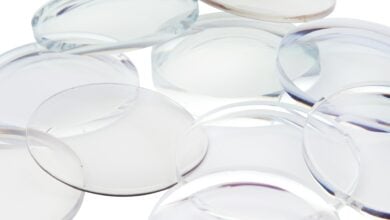In this post, we will be discussing what Polyurethane Sealant is and how it can be used in various ways. We’ll cover the different types of sealants available on the market and their intended use. Finally, we’ll talk about how to identify if your home has polyurethane sealant installed or not so you know which type to buy for future projects.
But first, we must understand what sealant is, the main choices on the market, and we will then go into detail on the best one on the market and the go-to choice for all builders/
What is a Sealant?
Sealant is the most versatile insulation material on Earth. It’s used to fill gaps, strengthen structures and seal cracks – but that doesn’t even scratch its surface!
Sealants are constructed of two components: an adhesive that binds together a porous substrate with reinforcing fibres or aggregate materials; and a polymer resin binder as the foundation for the finished product. Sealant can be applied by squeezing it out from pipes into a place where needed to create layers between different substrates such as metal panels, concrete surfaces or brickwork foundations etc., and This will eventually form one solid object because they share similar bonds so then you no longer have those narrow spaces like before when there was just air inside them.
Two types of sealant Silicone and Polyurethane
-Silicone sealant is naturally resistant to water and can be used in areas where there’s a lot of moisture. It also provides an airtight, weatherproof barrier that prevents mold from forming on walls or ceilings.
Polyurethane sealants are more flexible than silicone ones, making them suitable for use around joints and other irregular features such as window frames. Polyurethanes come in different levels of flexibility, so you can choose the right one based on your project needs. The most common type has ±25% movement capability while others have up to 50%.
What are the Basic Differences between Silicone & Polyurethane Sealants?
Polyurethane sealants are organic, and silicone is inorganic. Polyurethane’s properties such as hardness, adhesion strength, thixotropy and flexibility can be easily manipulated according to need; its mechanical strength and adhesiveness can also be increased or decreased depending on the desired needs of a project. Silicone has different qualities that make it more difficult to manipulate when compared with polyurethanes: while hardnesses vary by manufacturer, so does the degree of flexibility – meaning you cannot adjust silicon drastically without compromising one quality for another (a trade-off).
Out of all the sealants, there is a great all-rounder, which is NP1 sealant.
NP1 sealant is a reactive sealant that will react with the surface to form an organic silane and polymer matrix. NP-One has many qualities such as highly flexible, water-resistant, UV stable, low VOCs and ecologically safe, so it can be applied in places where traditional polyurethanes cannot.
NP One Sealant has been used on nuclear power plants to protect concrete from radiation damage because of its strong adhesion and ability for chemical resistance; this makes it perfect for sealing cracks or joints without worrying about environmental exposure occurring.
Five Reasons We Recommend NP1 Masterseal Sealant
- Insane waterproofing
NP1 is a material that can be submerged in water without losing its seal or grip. This ability makes it an ideal choice for situations where the object will not remain permanently underwater but needs to withstand powerful water sources, such as rivers and streams, during heavy rainfalls.
- The highest degree of flexibility
NP1 Masterseal Sealant has a joint movement capability of ±35%, making it perfect for jobs where the resulting structure may be expected to move substantially. With this flexibility, you won’t have to worry about your sealant coming loose with every little shift and shake in the world!
The NP1 sealant is a durable, flexible compound that will not come loose with any minor shifts and shake.
NP1 has the highest degree of flexibility compared to other products on the market today because it won’t break down or lose integrity after being shaken around in your car for years at a time! So it is a must in your builder arsenal.
- Will Bond to almost any building materials
NP1’s versatility makes it a great, low-maintenance solution for your next building project.
It is no wonder that NP1 is one of the most widely used products on today’s market! This generalist has found success bonding to almost any substrate from concrete and aluminum to wood or PVC pipes – you name it. Not only does this product make an amazing sealant when applied correctly (and can even be self-levelled!), but what really sets NP1 apart are its resistance properties in hot and cold climates; making these applications just as appropriate if we find ourselves living near Death Valley California as I do.
- High degrees of soundproofing
NP1 Masterseal Sealant is one of our best products for creating soundproof seals. It’s excellent in creating soundproofed rooms and other spaces focused on acoustics, and it can be highly effective for reducing noise transmission even if you don’t create a seal between two surfaces. NP1 Masterseal Sealant is one of our best products for creating soundproof seals. Because of this, it has been rated with an STC rating that surpasses most competitors’ ratings
– which means more customers are satisfied!
- Color customization
NP1 Masterseal Sealant is available in twelve different colors to match the look of many different materials and projects. However, if you’re looking for a particular color to work with your needs, don’t worry! You’ll be able to customize NP1 Masterseal Sealant by painting over any unwanted hues.
Polyurethane Sealant is one of the most popular types of sealants on the market. Polyurethane sealant can be used for a variety of projects, including sealing gaps around windows and doors; filling in cracks or small holes from previous construction work; waterproofing an area against moisture seeping through concrete slabs or tar paper roofing; reinforcing caulking at expansion joints between home siding materials; protecting floors by preventing water damage to basement walls when installed properly underground level floor joists. So what sealant will you use?




